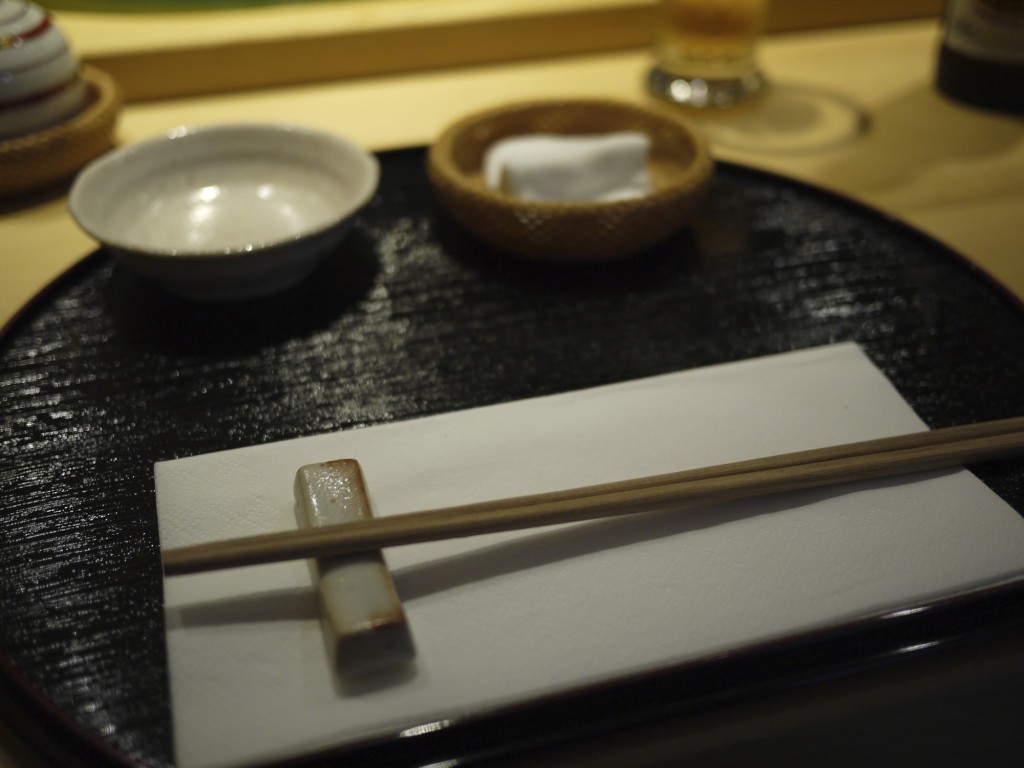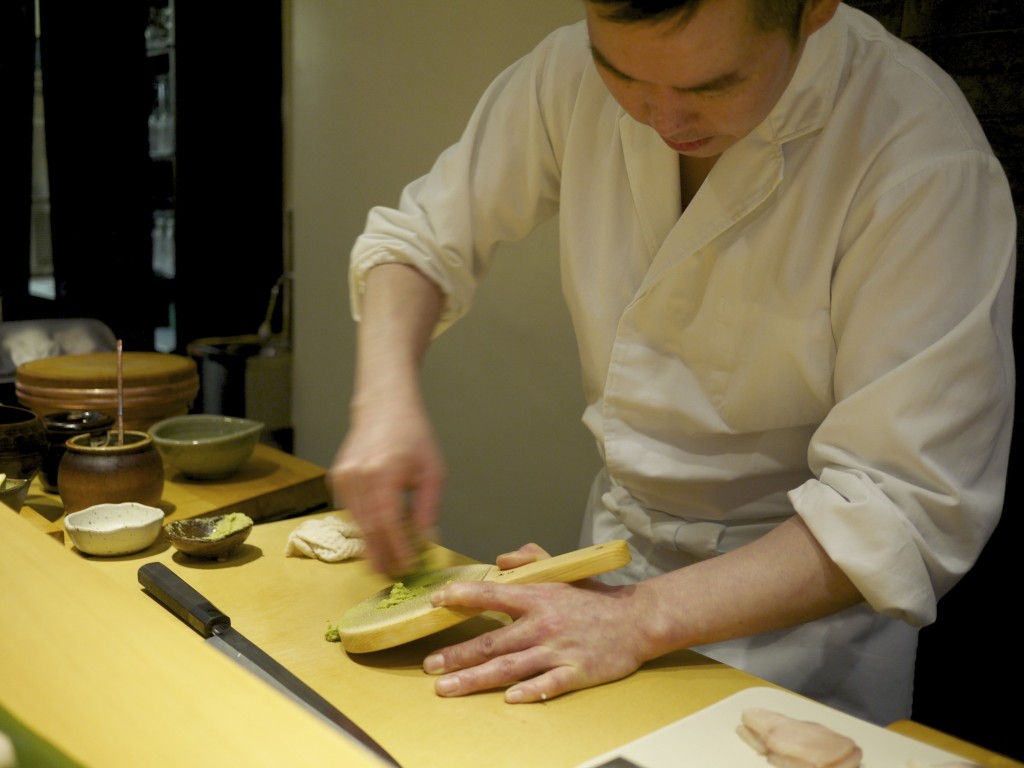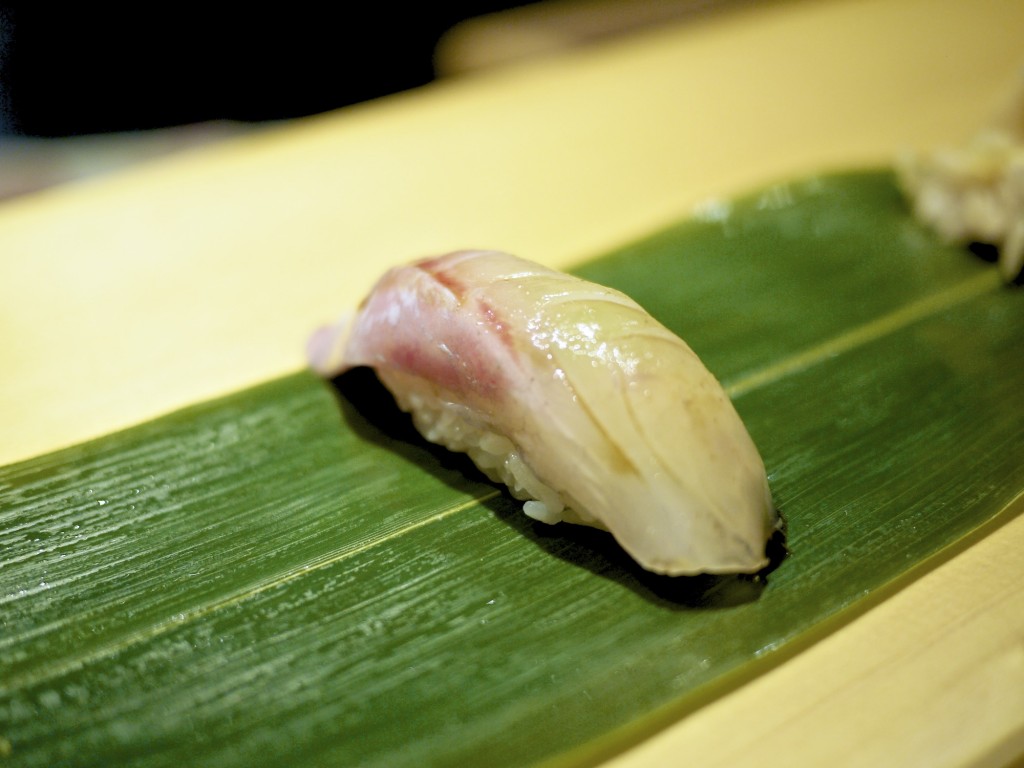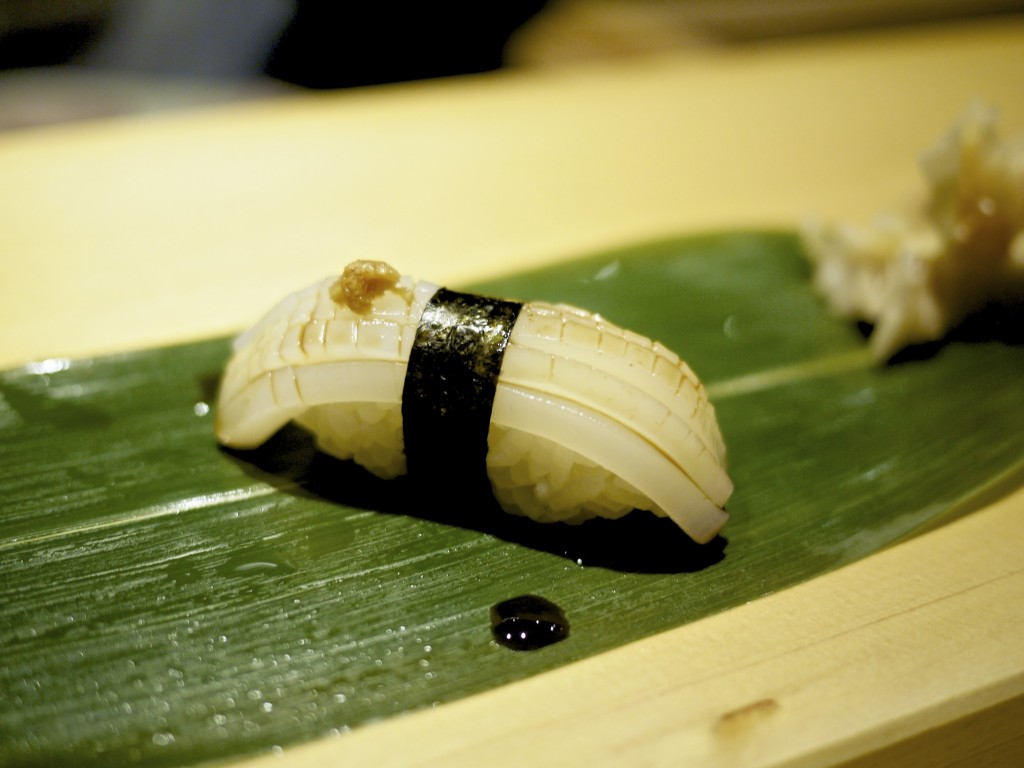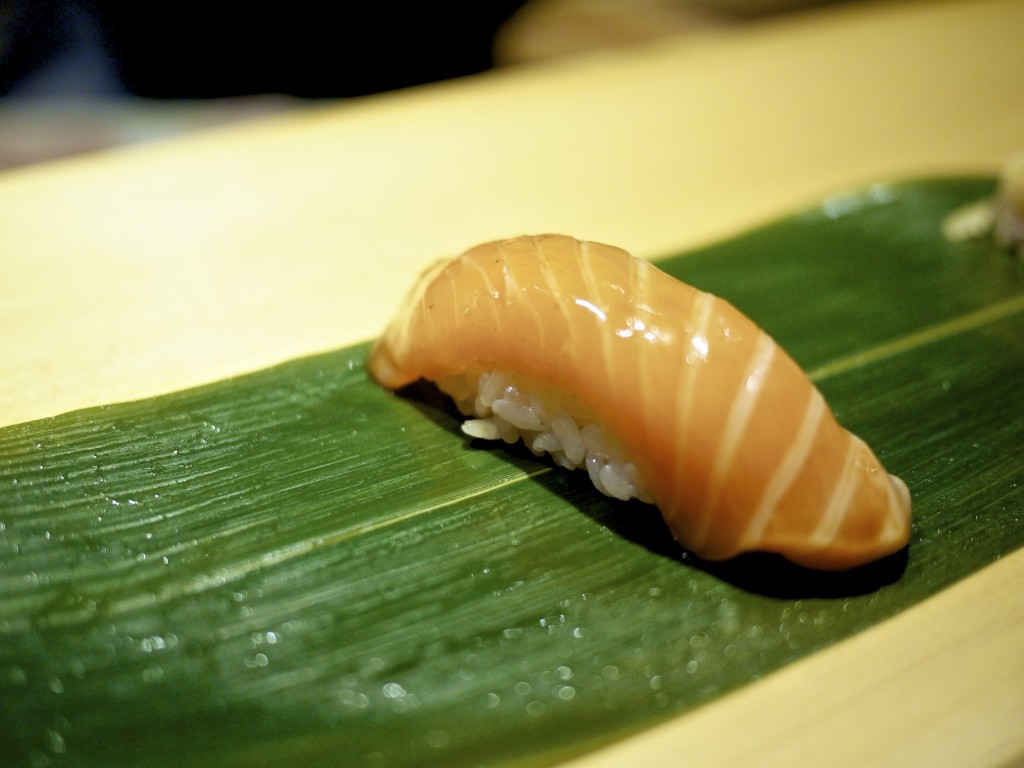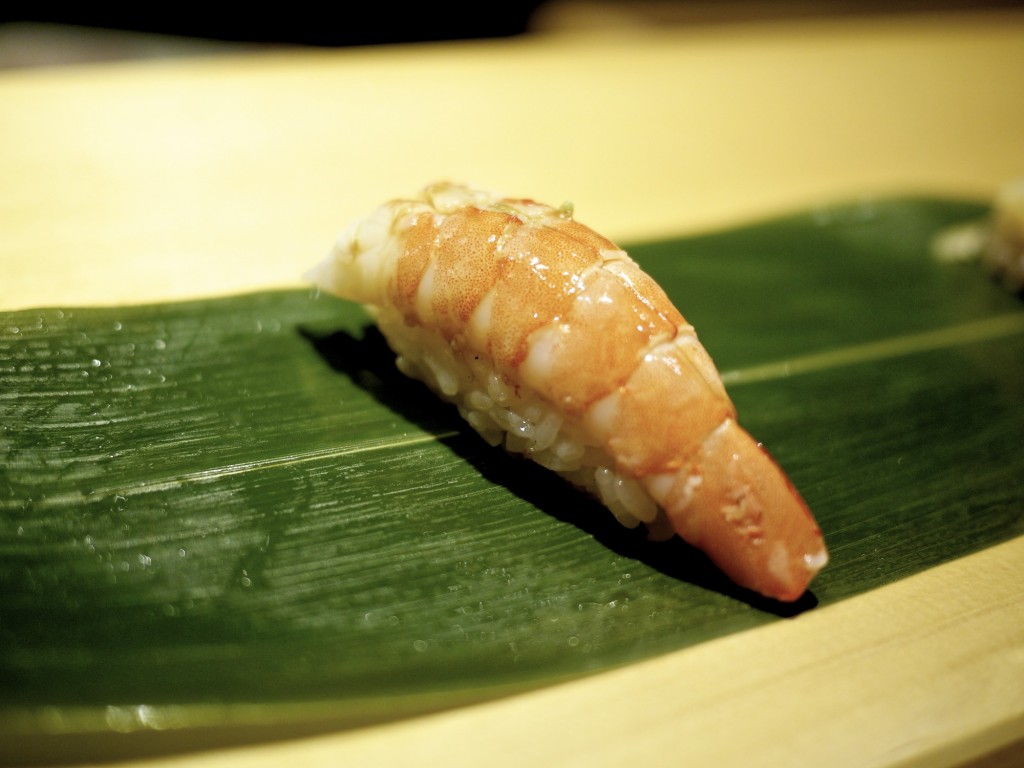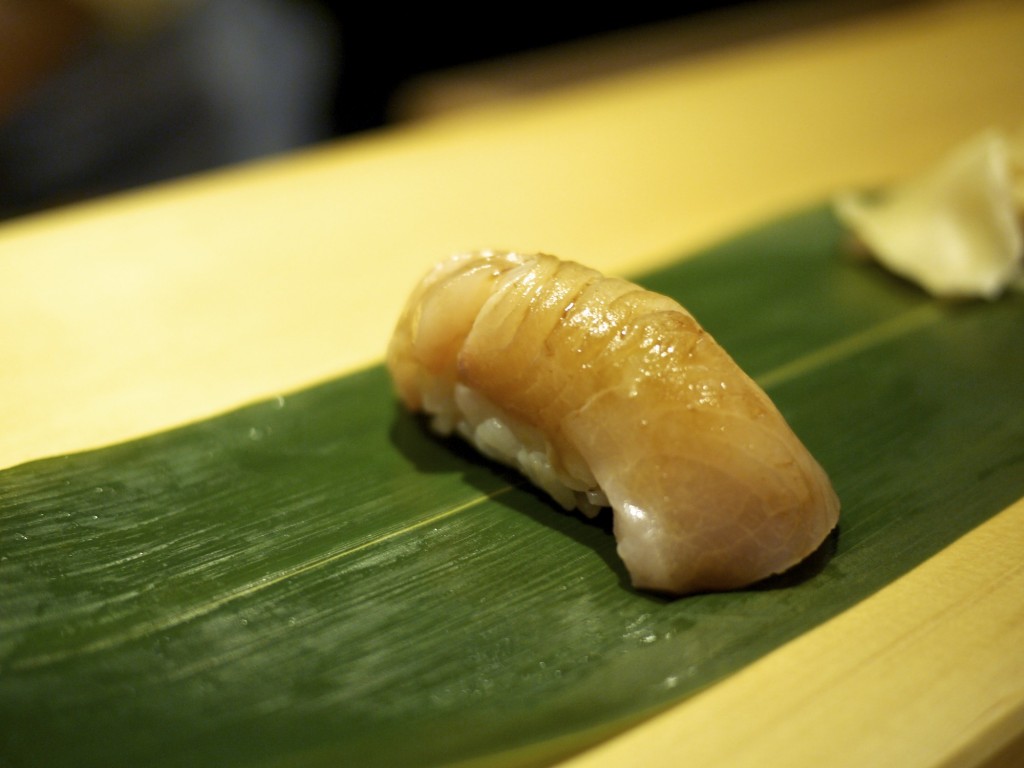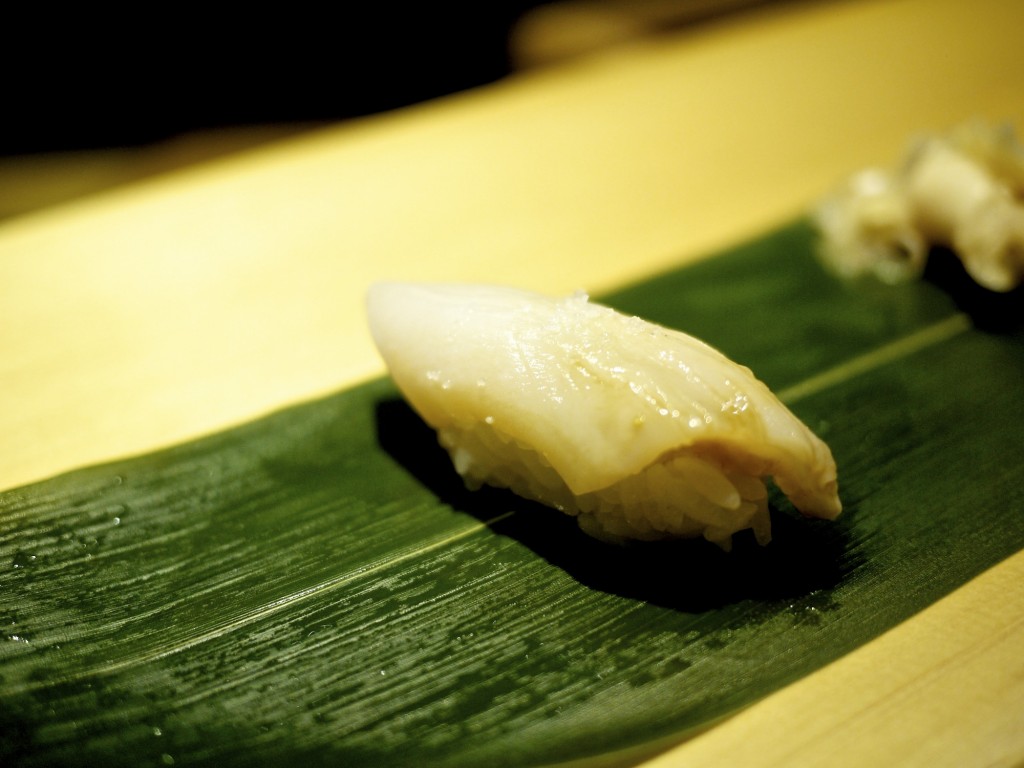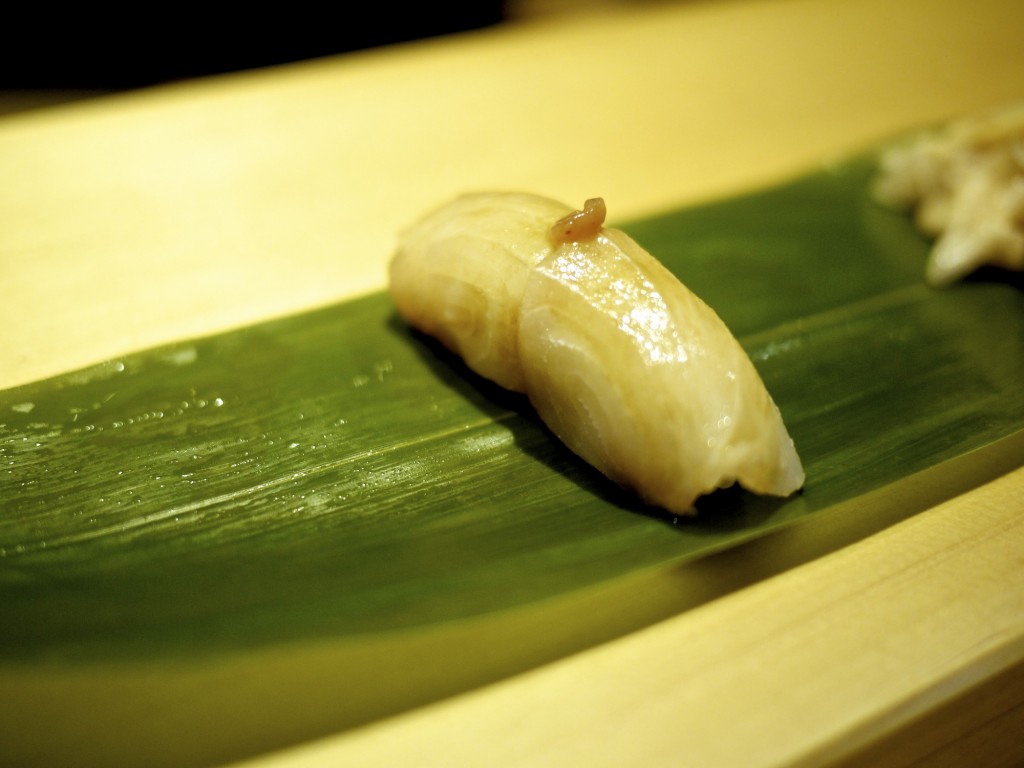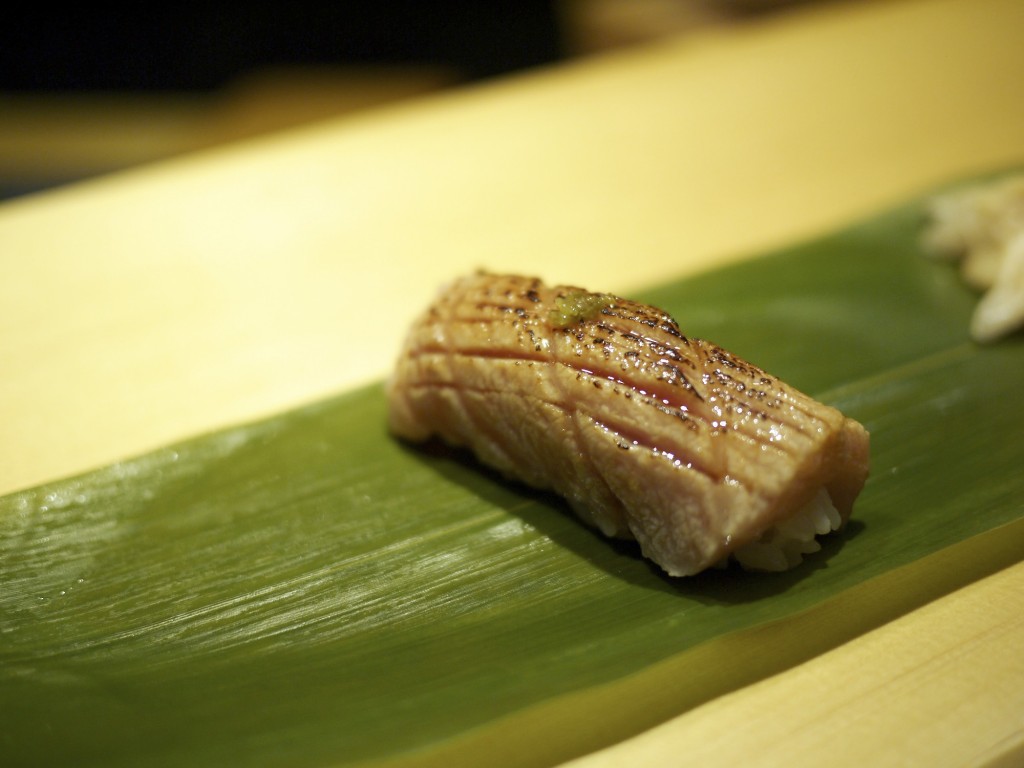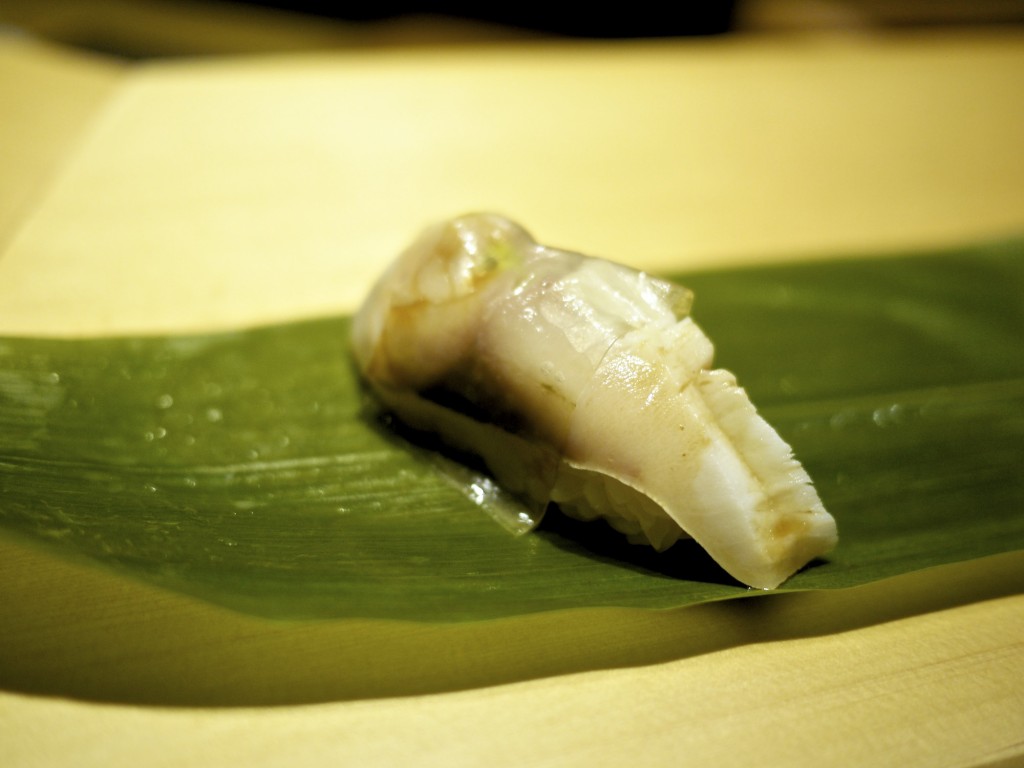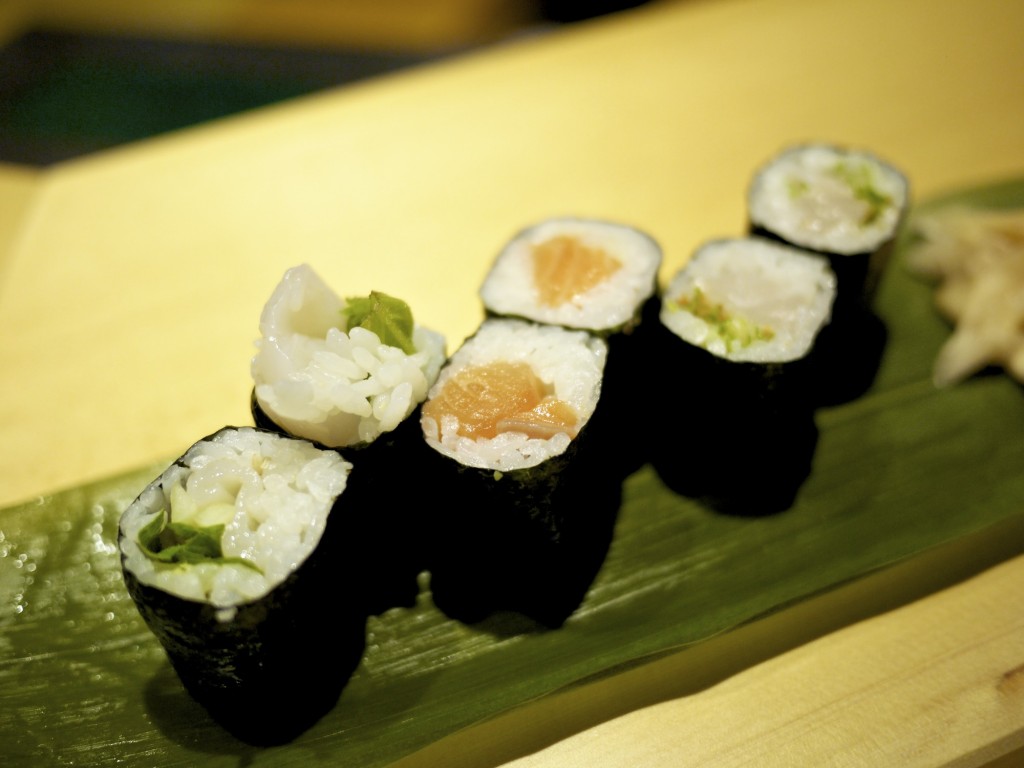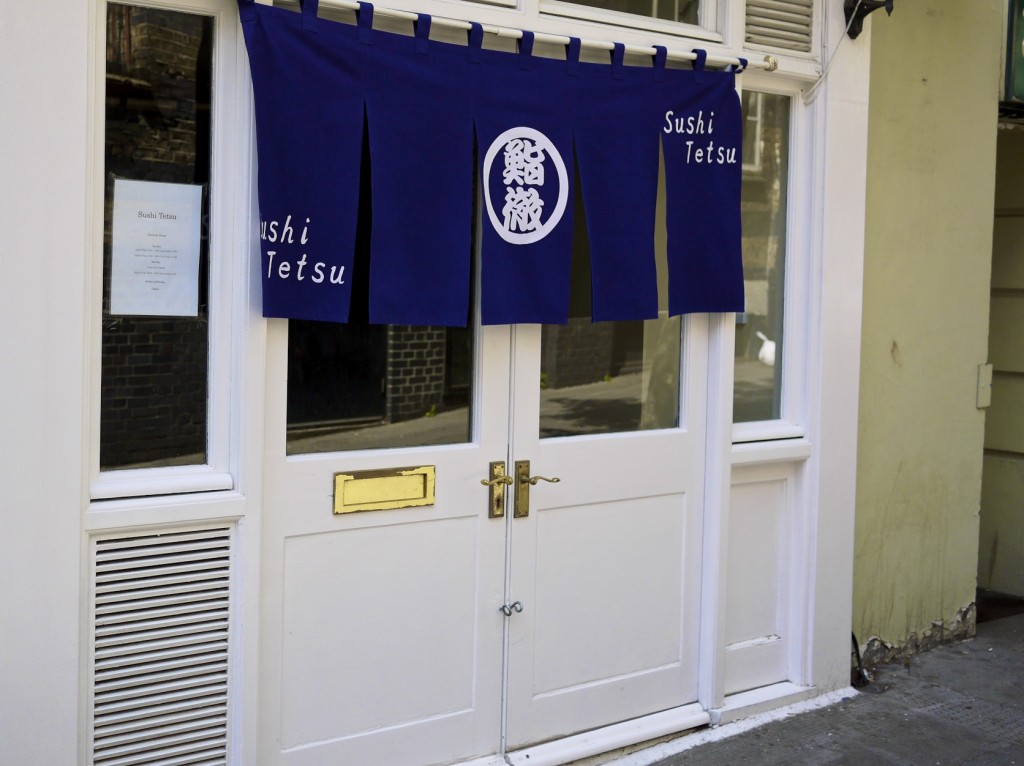 Chef: Toru Takahashi Website: www.sushitetsu.co.uk Cuisine: Sushi
Chef: Toru Takahashi Website: www.sushitetsu.co.uk Cuisine: Sushi
Following a memorable meal on my first visit to Sushi Tetsu a couple of months ago, I was desperate to go there one last time before my imminent departure to Melbourne. My track record in getting a reservation here had been very poor but that was about to change. I jumped at the news of a last minute cancellation for a Friday lunch and here I was, yet again, immersing myself with more amazing sushi. On this occasion I decided I wanted a bit more freedom to choose from the menu so I opted for the “moon” sushi set (£28) and added four additional sushi’s. Some of the sushi that day was even better than that on my first visit, proving my point that the quality of fish can drastically affect the final product.
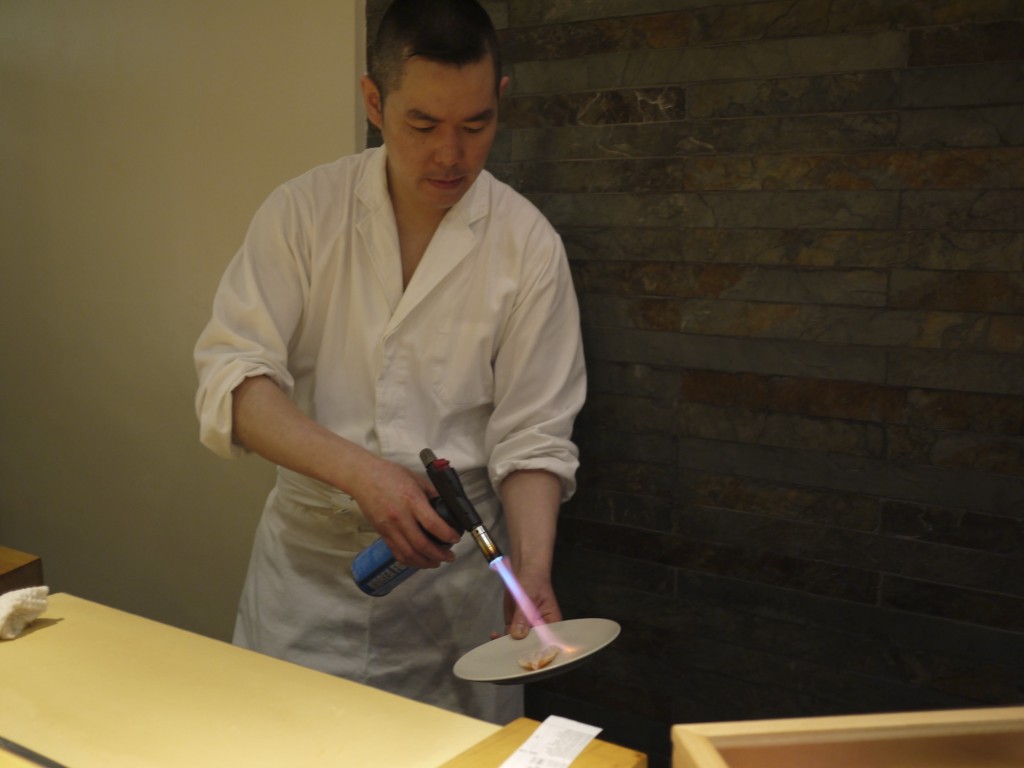 I was the last person to arrive for the lunch service and things were already in full swing. As always the greeting was very warm and I felt very much at ease despite dining on my own. I spent most of my time chatting with Harumi-san getting some tips on great Japanese restaurants in the Barcelona and the Asia Pacific region.
I was the last person to arrive for the lunch service and things were already in full swing. As always the greeting was very warm and I felt very much at ease despite dining on my own. I spent most of my time chatting with Harumi-san getting some tips on great Japanese restaurants in the Barcelona and the Asia Pacific region.
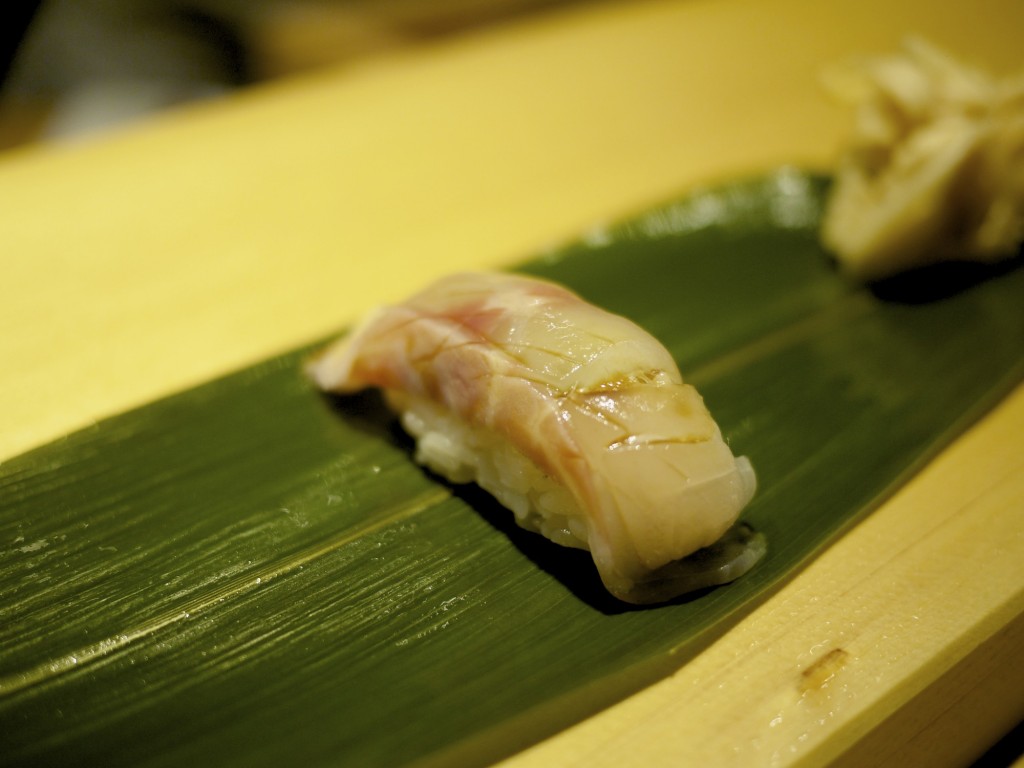 First course for lunch was Sea bass (鱸). The sweetness of the fish was brought out with the touch of home made soy sauce concoction and the green shiso leaf tucked underneath dispelled the fishiness, only leaving the delicious flavour of the fish.
First course for lunch was Sea bass (鱸). The sweetness of the fish was brought out with the touch of home made soy sauce concoction and the green shiso leaf tucked underneath dispelled the fishiness, only leaving the delicious flavour of the fish.
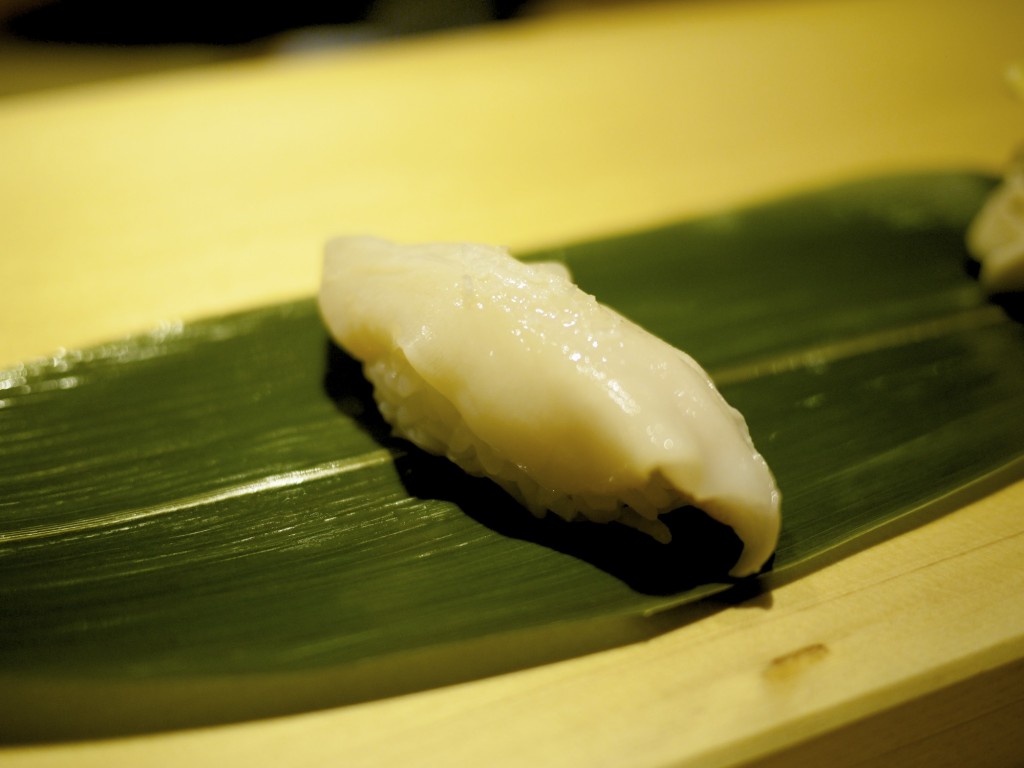 Next up was Razor clam (まて貝). The quality of the razor clam was superior to the one I tried on my first visit, evidenced by the additional sweetness oozing out from each bite. I also thought Takahashi-san had really nailed the amount of lemon juice and sea salt to complement the dish.
Next up was Razor clam (まて貝). The quality of the razor clam was superior to the one I tried on my first visit, evidenced by the additional sweetness oozing out from each bite. I also thought Takahashi-san had really nailed the amount of lemon juice and sea salt to complement the dish.
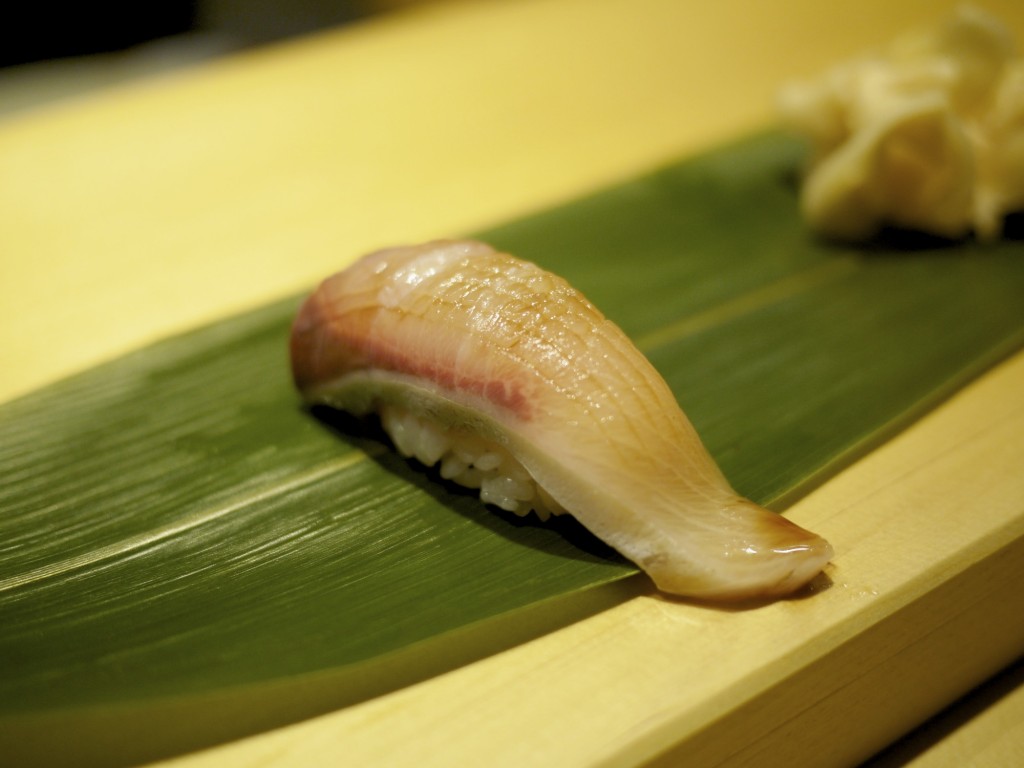 I was excited to see Amberjack (カンパチ) which I had not previously tried at Sushi tetsu. Takahashi-san had imported this luxurious fish fresh from Japan where it was currently in season (summer). Compared to its cousin of the yellow tail, it was much softer and less oily. It was served again with the right amount of wasab and soy sauce.
I was excited to see Amberjack (カンパチ) which I had not previously tried at Sushi tetsu. Takahashi-san had imported this luxurious fish fresh from Japan where it was currently in season (summer). Compared to its cousin of the yellow tail, it was much softer and less oily. It was served again with the right amount of wasab and soy sauce.
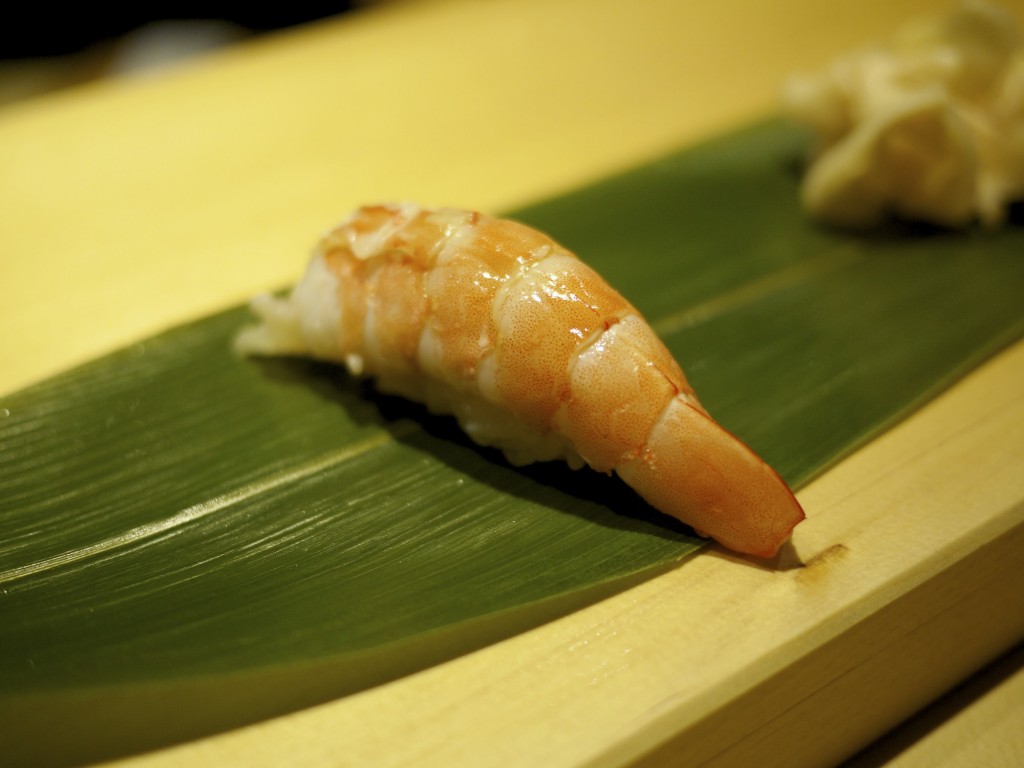 The Prawn (海老) was similar to my previous visit with a slight hint of smokiness from the blow torch and zestiness from the lemon juice.
The Prawn (海老) was similar to my previous visit with a slight hint of smokiness from the blow torch and zestiness from the lemon juice.
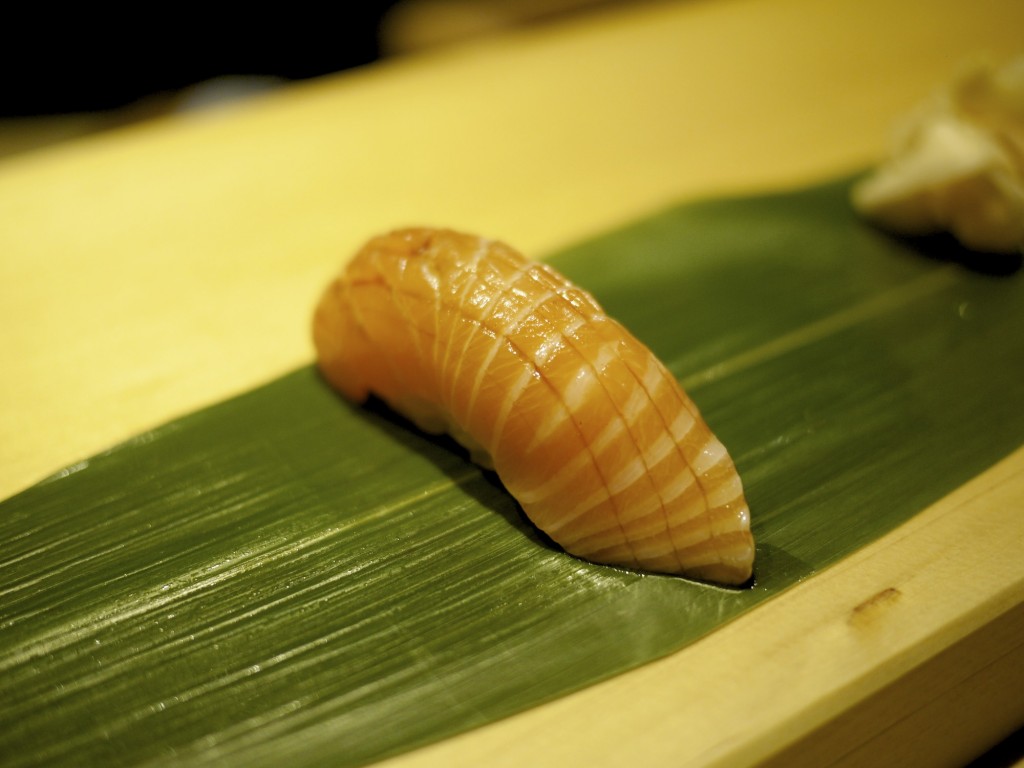 The Salmon (鮪) was similarly equally as good as the previous visit, served again with slight incisions to plump up the texture of this oily fish. I still reckon it is one of the most understated fish in Japan within the world of sushi. If only more places served them to this quality!
The Salmon (鮪) was similarly equally as good as the previous visit, served again with slight incisions to plump up the texture of this oily fish. I still reckon it is one of the most understated fish in Japan within the world of sushi. If only more places served them to this quality!
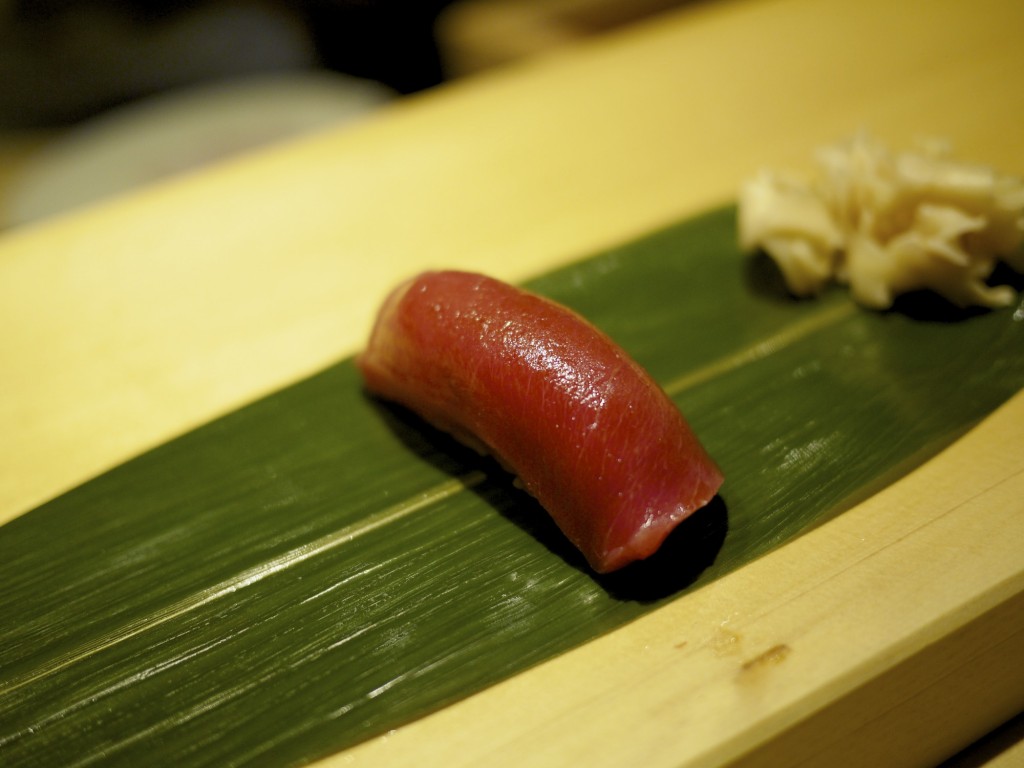 I was very glad to see that Akami (赤身) was on the menu again. For those of you who read my previous entry on Sushi Tetsu, I had a tragic moment wolfing down this delicious morsel before realising that I had forgotten to take a photo. Not this time. I could never live this down if it happened again. The cold cut of the akami only had a thin coating of soy sauce, releasing bursts of flavours on each bite. Delicious, refreshing and simple. The tuna Takahashi-san sourced was consistently of high quality.
I was very glad to see that Akami (赤身) was on the menu again. For those of you who read my previous entry on Sushi Tetsu, I had a tragic moment wolfing down this delicious morsel before realising that I had forgotten to take a photo. Not this time. I could never live this down if it happened again. The cold cut of the akami only had a thin coating of soy sauce, releasing bursts of flavours on each bite. Delicious, refreshing and simple. The tuna Takahashi-san sourced was consistently of high quality.
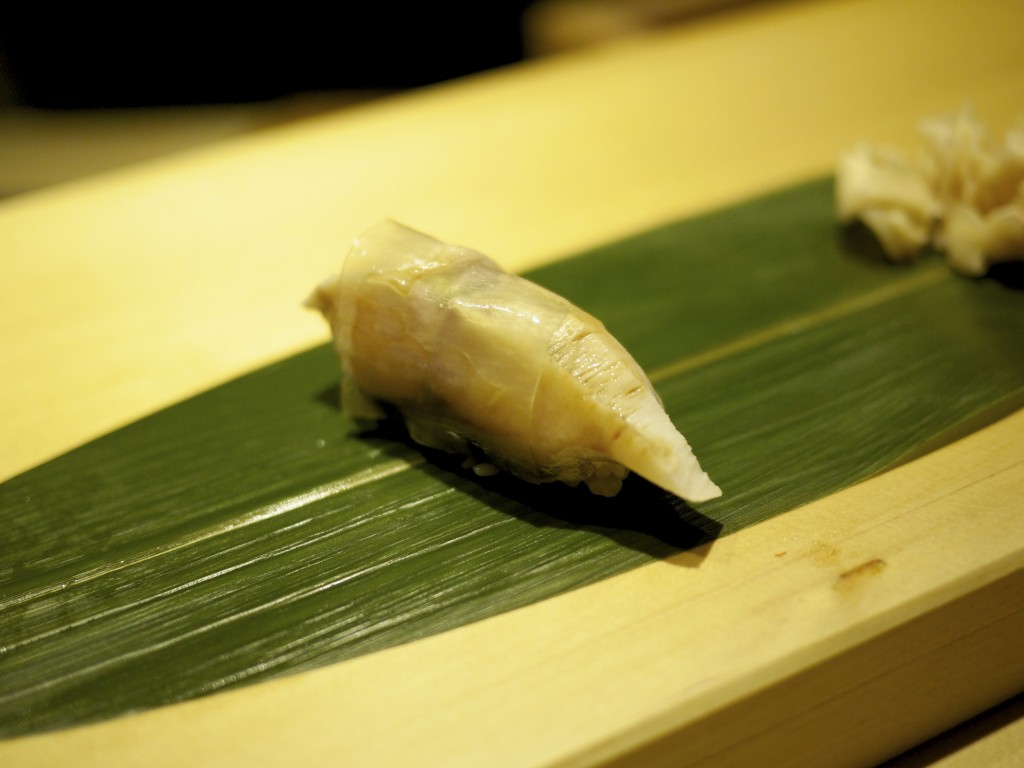 Another improved dish of the Mackerel (鯖) which contained sansho (Sichuan pepper) giving the fish an earthy flavour. Along with the natural juiciness of the fish with a tanginess from a hint of lemon, it was delicious. To finish off, su-konbu (seaweed marinated in vinegar) was wrapped around it to give it additional texture and remove the fishy aftertaste of this delicate fish. I was in heaven. I should have ordered another one…
Another improved dish of the Mackerel (鯖) which contained sansho (Sichuan pepper) giving the fish an earthy flavour. Along with the natural juiciness of the fish with a tanginess from a hint of lemon, it was delicious. To finish off, su-konbu (seaweed marinated in vinegar) was wrapped around it to give it additional texture and remove the fishy aftertaste of this delicate fish. I was in heaven. I should have ordered another one…
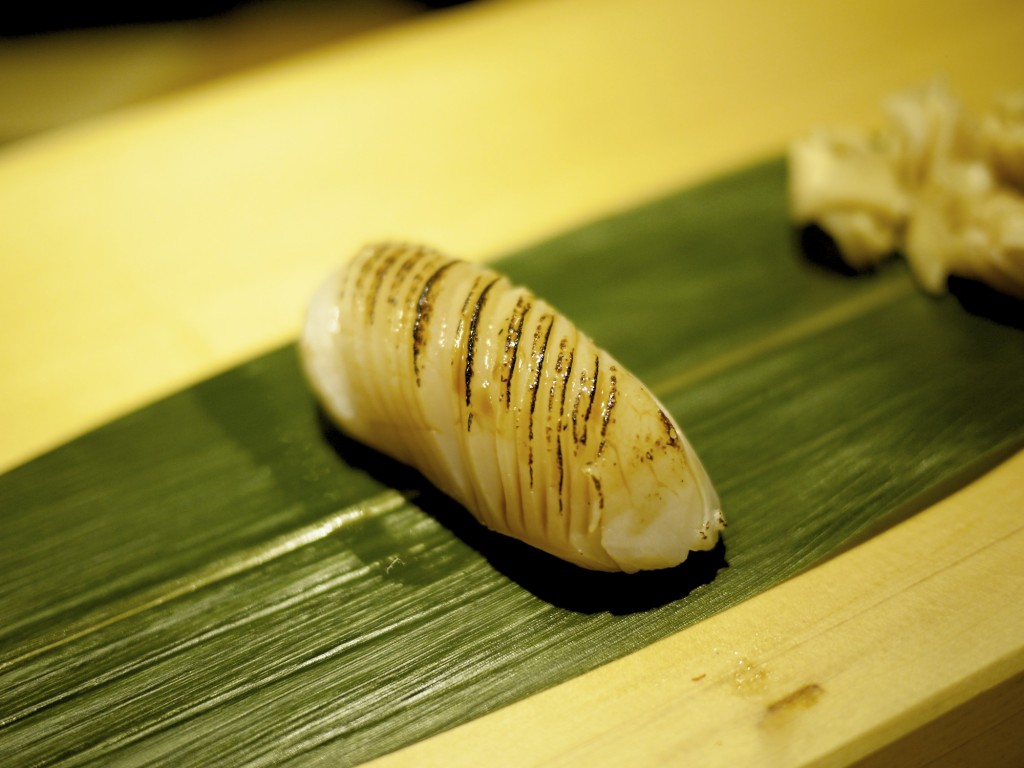 It was at this point when I had the chance to deviate from the set menu and try something different. Following Takahashi-san’s recommendation I opted first for the Scallop (帆立貝). I was amazed to see the size of the scallop he had carefully laid out. They were hand dived scallops from Scotland which were meaty on their own but Takahashi-san had added some incisions at an angle to further enhance that plump texture. I couldn’t remember the last time I had a scallop sushi this good. It was very sweet and fragrant, just the way a scallop should be.
It was at this point when I had the chance to deviate from the set menu and try something different. Following Takahashi-san’s recommendation I opted first for the Scallop (帆立貝). I was amazed to see the size of the scallop he had carefully laid out. They were hand dived scallops from Scotland which were meaty on their own but Takahashi-san had added some incisions at an angle to further enhance that plump texture. I couldn’t remember the last time I had a scallop sushi this good. It was very sweet and fragrant, just the way a scallop should be.
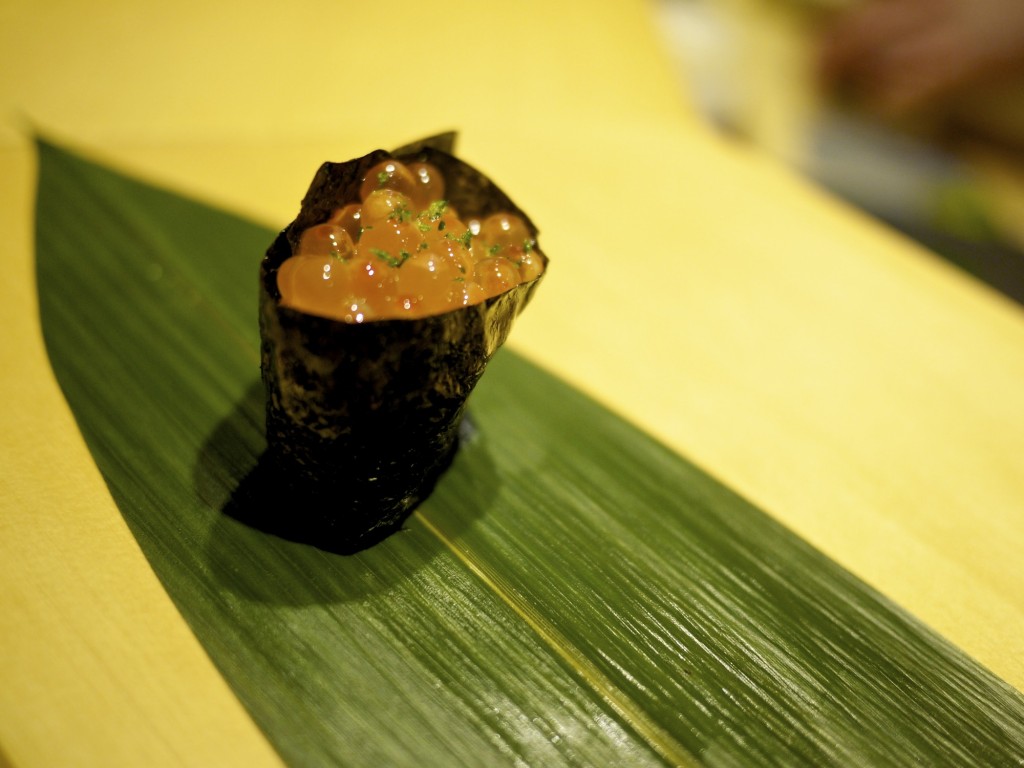 Next up was my childhood favourite of Salmon roe (イクラ). Takahashi-san had taken the salt away from the salmon roe which had been used to preserve it. He then marinated it in a sauce made from a carefully balanced mixture of mirin and soy sauce. He carefully spooned a few out to place on top of the rice and grated some lime zest. I savoured this moment and tasted each bursting bubble in my mouth as they oozed out the intense and delicious sticky fishy juice inside, perfectly balanced with the lime zest. It was so good my cheeks just swelled up and I couldn’t stop smiling.
Next up was my childhood favourite of Salmon roe (イクラ). Takahashi-san had taken the salt away from the salmon roe which had been used to preserve it. He then marinated it in a sauce made from a carefully balanced mixture of mirin and soy sauce. He carefully spooned a few out to place on top of the rice and grated some lime zest. I savoured this moment and tasted each bursting bubble in my mouth as they oozed out the intense and delicious sticky fishy juice inside, perfectly balanced with the lime zest. It was so good my cheeks just swelled up and I couldn’t stop smiling.
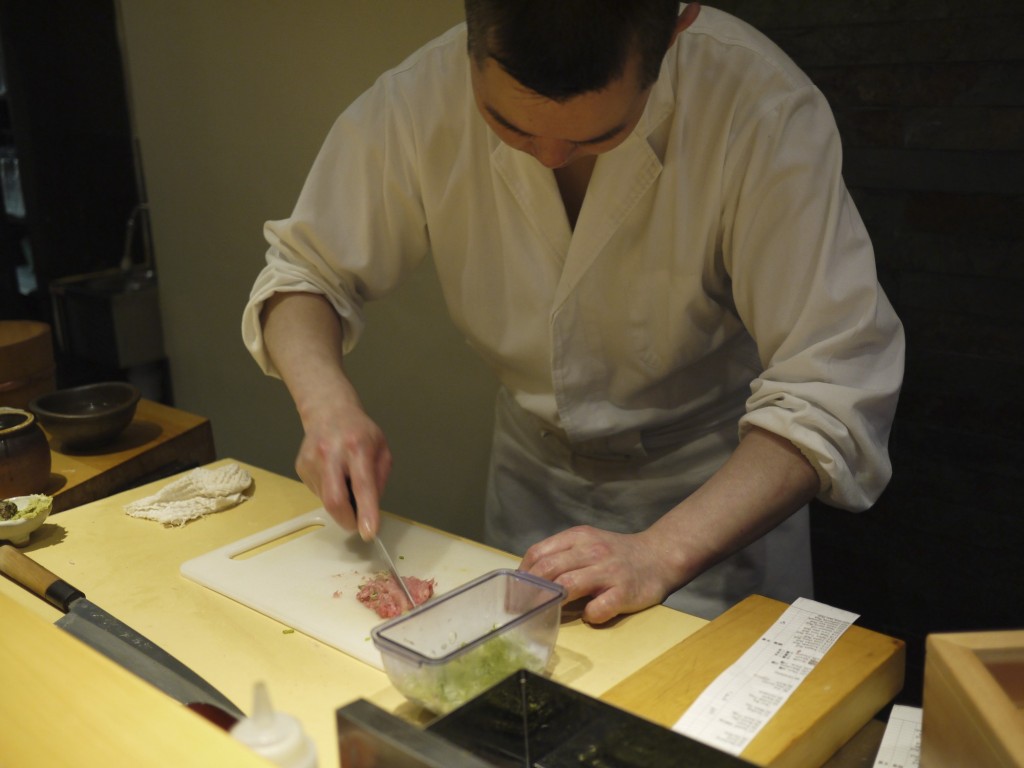 After savouring my salmon roe sushi which seemed to take an eternity (and I started getting some weird looks from other diners), I saw Takahashi-san preparing my hosomaki… but surely this couldn’t be the end? I still had one more sushi! Seeing how nervous I looked, he reassured me that he had not forgotten my last sushi but that this special hosomaki needed to be consumed before the last sushi due to the richness of the last dish.
After savouring my salmon roe sushi which seemed to take an eternity (and I started getting some weird looks from other diners), I saw Takahashi-san preparing my hosomaki… but surely this couldn’t be the end? I still had one more sushi! Seeing how nervous I looked, he reassured me that he had not forgotten my last sushi but that this special hosomaki needed to be consumed before the last sushi due to the richness of the last dish.
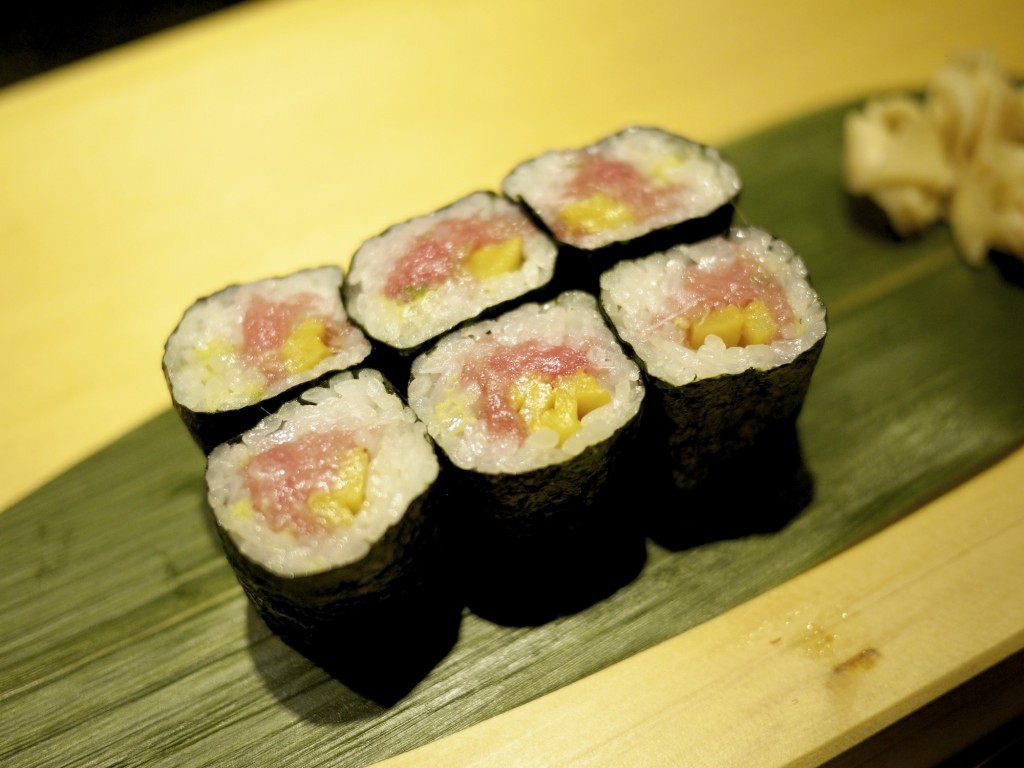 During the course of the meal, Takahashi-san found out that this was my last meal in London and offered me a special leaving gift of the Toro no Oshinko (とろ沢庵巻). Essentially it was the fattiest part of the tuna (o-toro) that had been minced with spring onion and then wrapped with sesame seed and shinko (pickled radish). It was crunchy and delicious, and I was very touched. I did however wish I had ordered the nigiri of o-toro as well but luckily the next course more than made up for my mistake.
During the course of the meal, Takahashi-san found out that this was my last meal in London and offered me a special leaving gift of the Toro no Oshinko (とろ沢庵巻). Essentially it was the fattiest part of the tuna (o-toro) that had been minced with spring onion and then wrapped with sesame seed and shinko (pickled radish). It was crunchy and delicious, and I was very touched. I did however wish I had ordered the nigiri of o-toro as well but luckily the next course more than made up for my mistake.
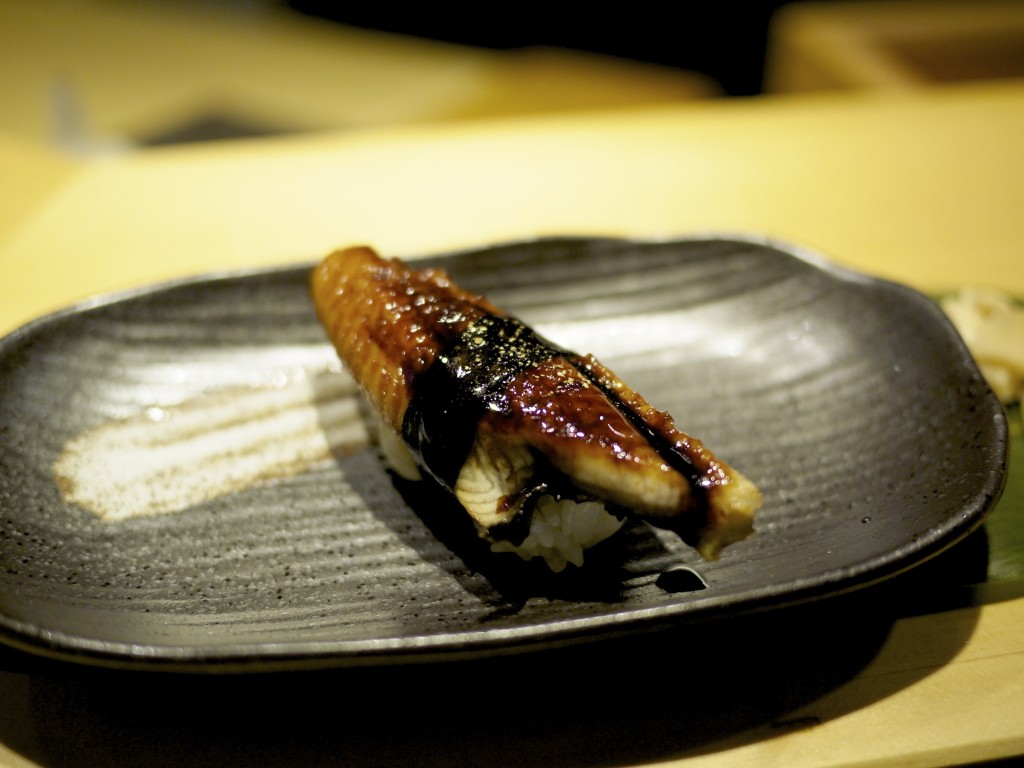 I saw the group of four diners next to me order Eel (鰻) earlier on and there was no way I would be leaving the restaurant having caught my olfactory attention with its sweet and seductive smell. The eel was blow torched before the sticky sweet soy based kabayaki (蒲焼) sauce was generously pasted over it with a pinch of sansho. The art of preparing an eel kabayaki requires years of experience as it is technically quite difficult. It involves gutting, de-boning, butterflying and filleting the delicate eel, followed by skewering and dipping it into the kabayaki sauce before broiling it on a grill at a temperature which needs to be precise and controlled. I asked Takahashi-san how he had prepared the eel but he only smiled and told me it was a secret… d’oh!
I saw the group of four diners next to me order Eel (鰻) earlier on and there was no way I would be leaving the restaurant having caught my olfactory attention with its sweet and seductive smell. The eel was blow torched before the sticky sweet soy based kabayaki (蒲焼) sauce was generously pasted over it with a pinch of sansho. The art of preparing an eel kabayaki requires years of experience as it is technically quite difficult. It involves gutting, de-boning, butterflying and filleting the delicate eel, followed by skewering and dipping it into the kabayaki sauce before broiling it on a grill at a temperature which needs to be precise and controlled. I asked Takahashi-san how he had prepared the eel but he only smiled and told me it was a secret… d’oh!
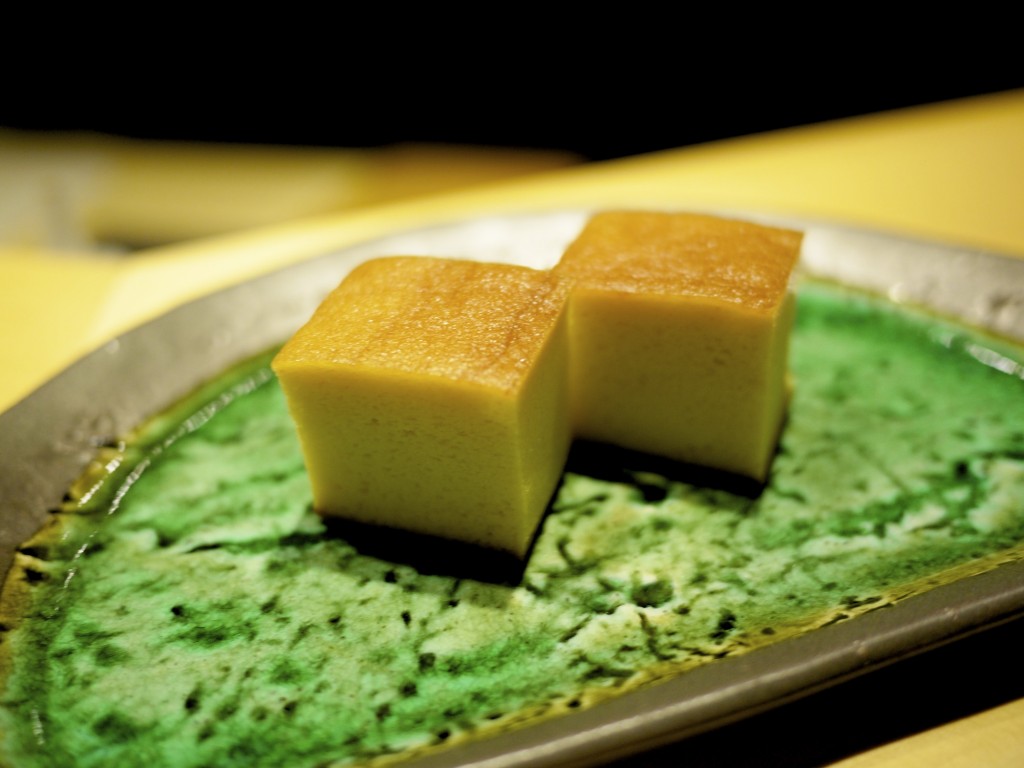 Alas, all good things must come to an end (again) and in this case with a Japanese sweet omlette (厚焼き玉子). At first sight it looked like an ordinary puffed up omlette but this one contained prawns, sea bass paste and yam. It had an interesting flavour and texture not too dissimilar to that of datemaki (伊達巻き) which contains similar ingredients and is prepared typically for Japanese New Years as part of the Osechi cuisine.
Alas, all good things must come to an end (again) and in this case with a Japanese sweet omlette (厚焼き玉子). At first sight it looked like an ordinary puffed up omlette but this one contained prawns, sea bass paste and yam. It had an interesting flavour and texture not too dissimilar to that of datemaki (伊達巻き) which contains similar ingredients and is prepared typically for Japanese New Years as part of the Osechi cuisine.
My second visit to Sushi Tetsu proved my point that the quality of fish can dramatically affect the end product of the sushi itself. A couple of sushi’s I had on the second visit were noticeably better despite the same level of care and preparation by Takahashi-san. The only difference was the fish. Don’t get me wrong, the quality on both occasion were very good but on one particular day it was even better. I was slightly disappointed that he didn’t have any sea urchin that day but I guess that demonstrated that Takahashi-san only handled ingredients that were in season and superior in quality that day. He teased me that he was getting some the following day but that was just cruel. I was thinking of just turning up next day but then again I didn’t want to inconvenience Harumi-san. Nevertheless, I couldn’t have asked for a better send off from London. I swear I will be back again…

